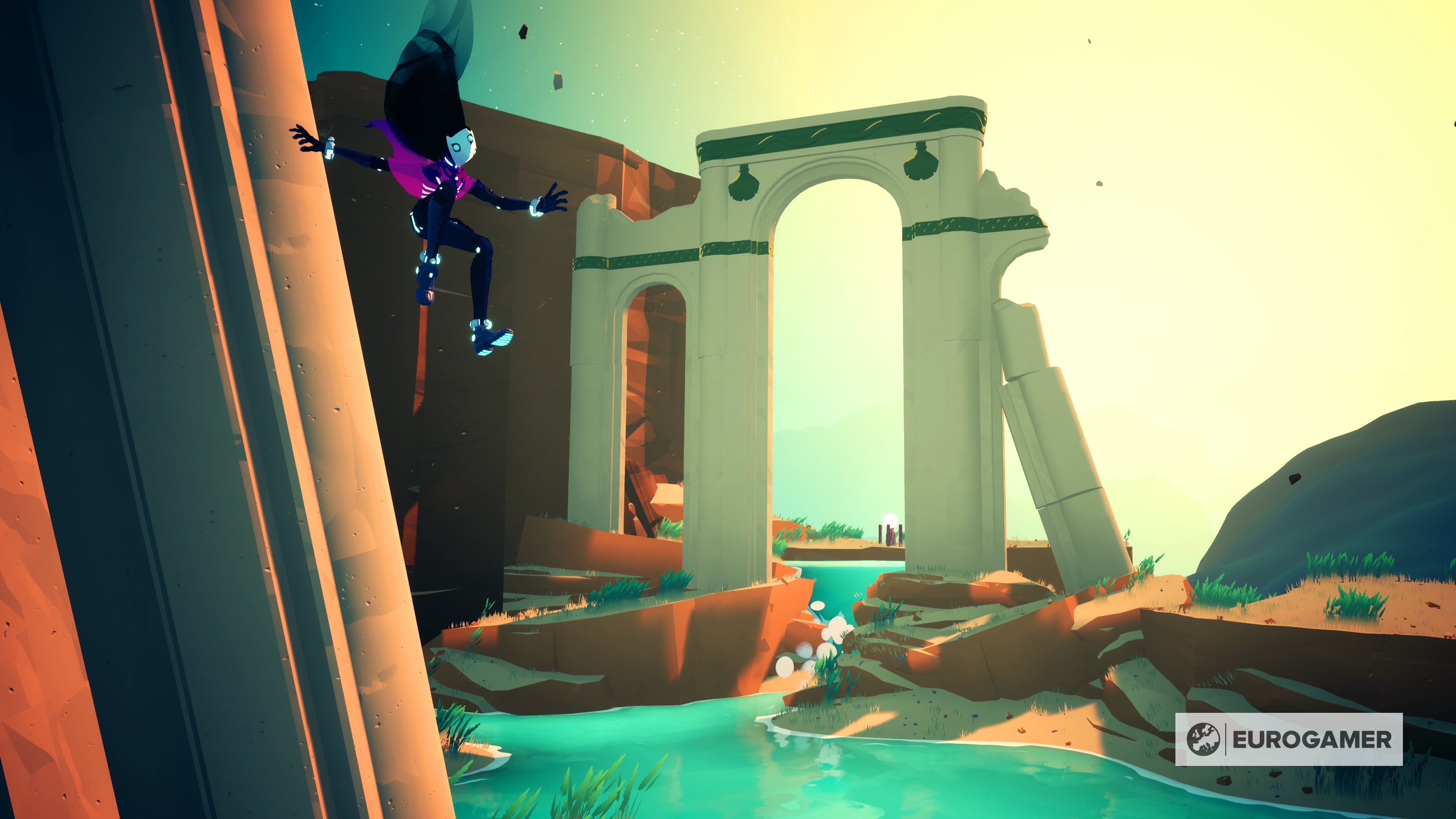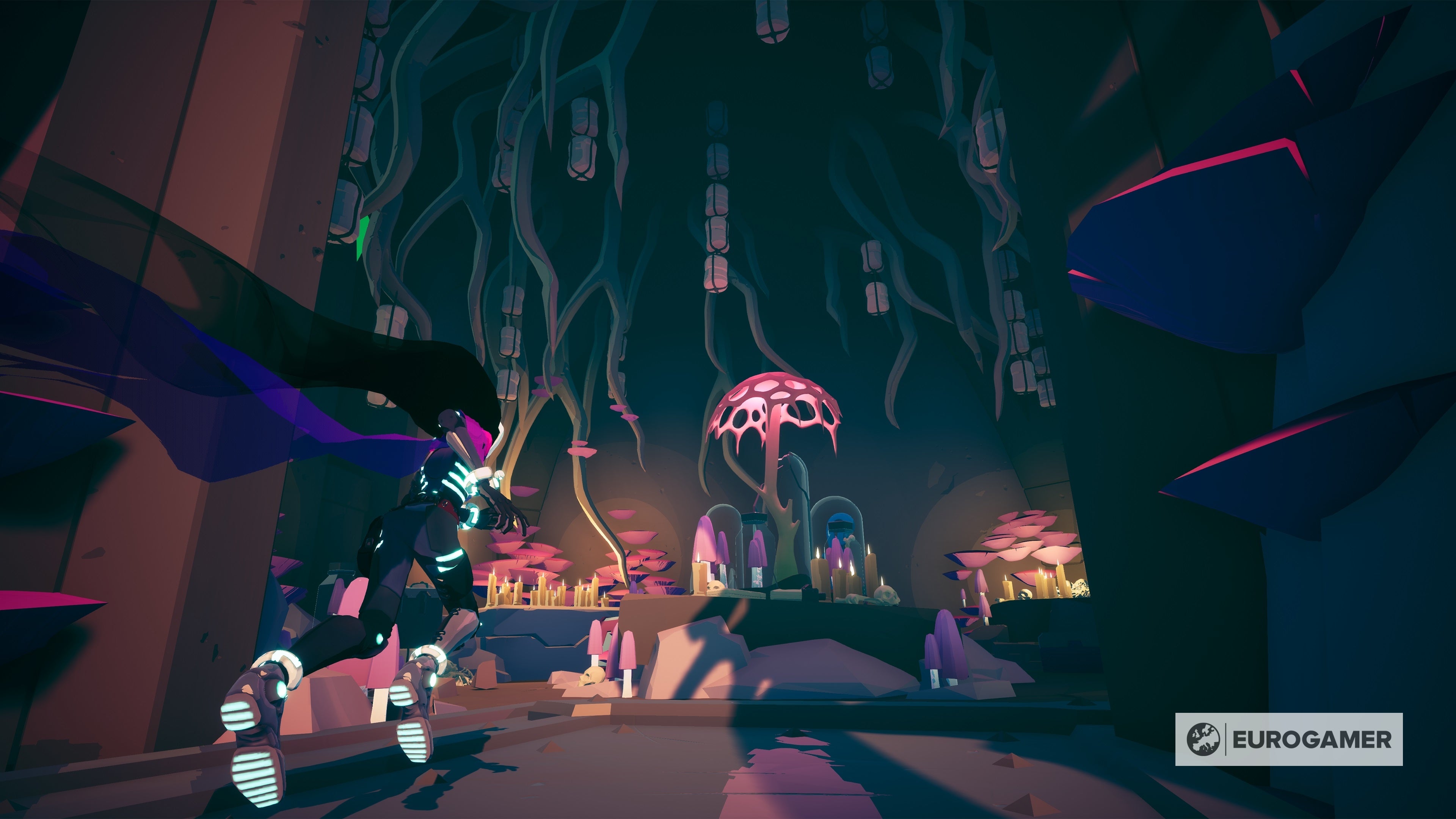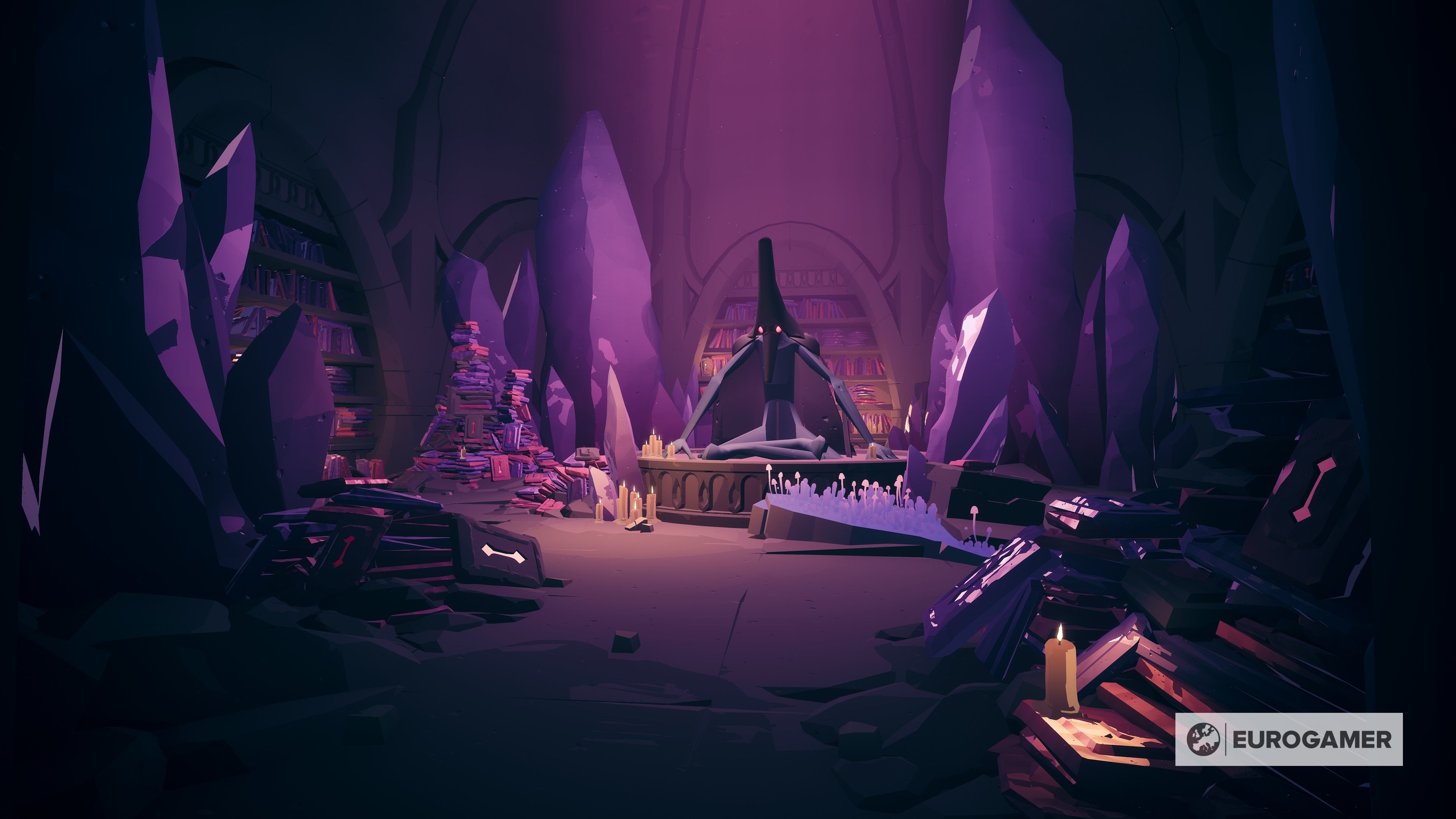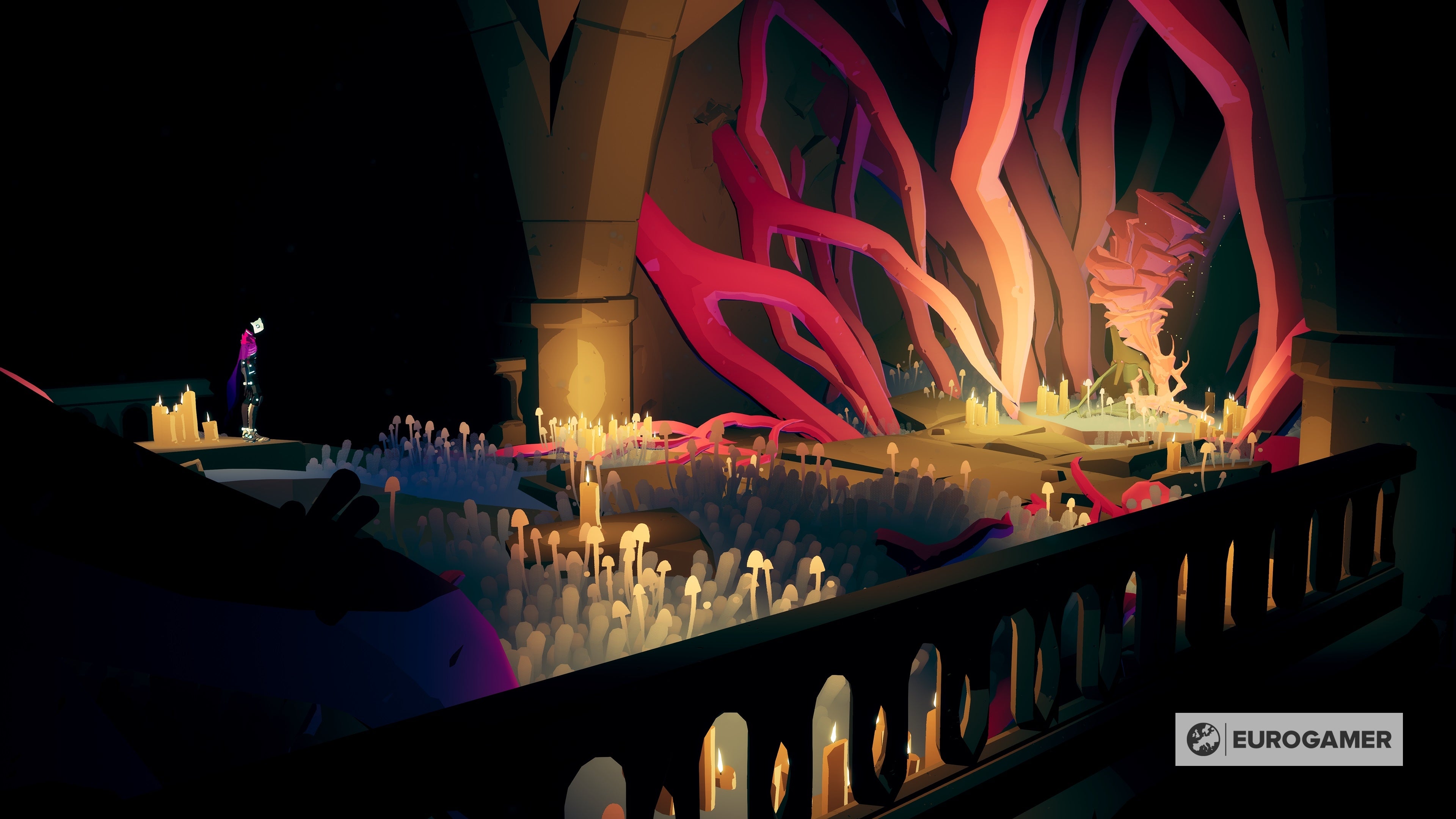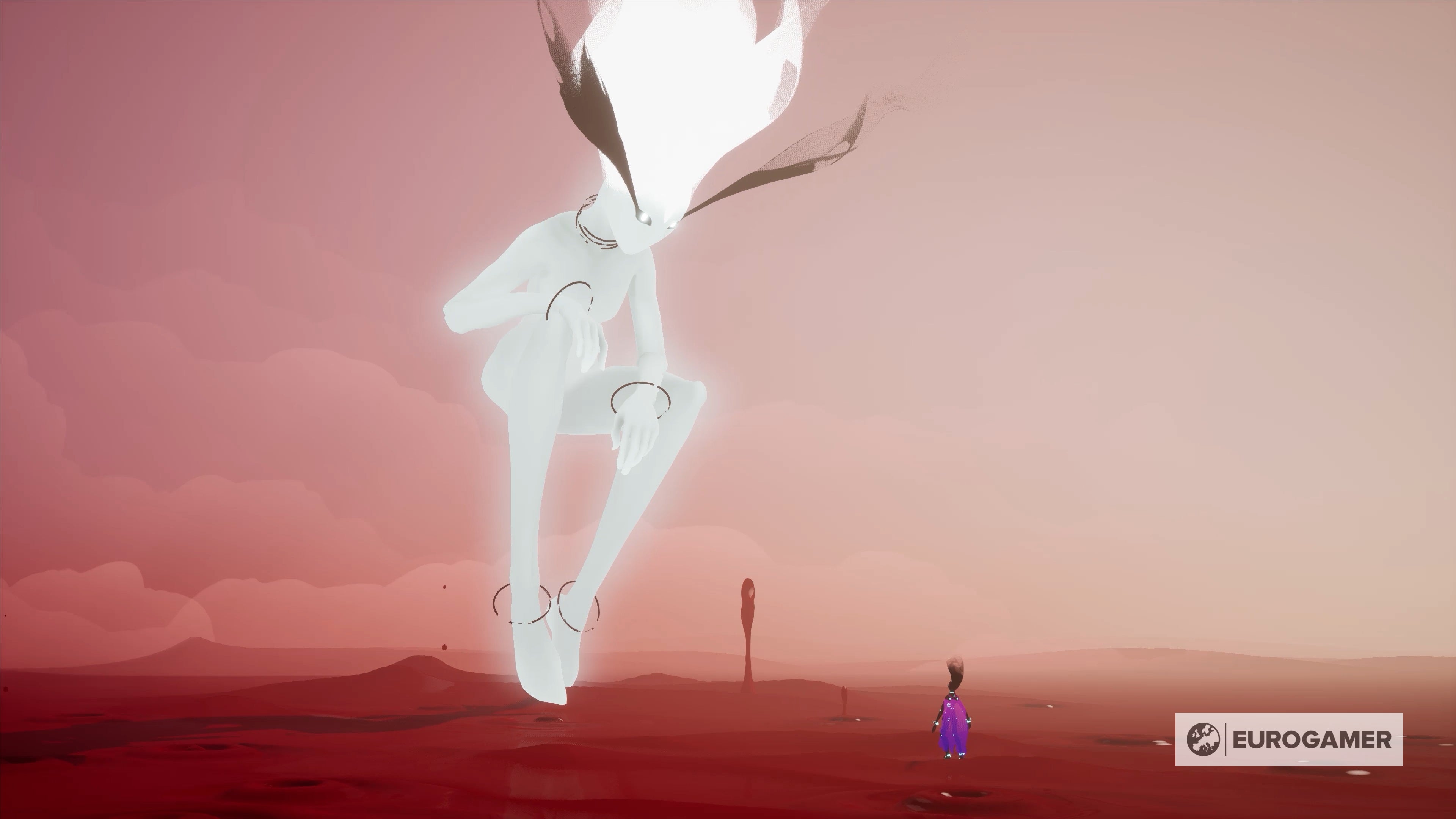Solar Ash is a game about movement, a game about speeding around bizarre fantasy landscapes and confronting enormous bosses who live there. You skate on multicoloured clouds which bobble up behind you, and then you grind along glowing rails sprouting from alien pods. You fling grappling hooks to bridge chasms and you swing to new areas, and you scramble up sticky, sludgy growths to reach others. When you’re doing Solar Ash properly, you’re moving at speed. It’s not, like Hyper Light Drifter, a game about combat. There is some but it’s there to make you think about the route you’ve picked, or to try and interrupt you. A few quick acrobatic hits see off most enemies and you’re on your way again, and it creates a flowing kind of feeling to the game. Bosses follow the same logic. They’re so big that defeating them involves climbing them and treating them like moving levels of their own. Only then can you find their weak spots and bring them down, like in Shadow of the Colossus. And when the bosses get so big they engulf entire mini-planets, like the plated, lizardy boss I see - which is apparently the smallest of them all - Solar Ash begins to look a lot like Super Mario Galaxy. It’s even got that kind of cartoon sheen, that softness. Alx Preston would like it to play like a Mario game too, which is a heady goal, though having only seen someone else play it, I can’t tell if he’s managed. Enabling all of this, this idea of movement and freedom, is the move from Hyper Light Drifter’s intricate, pixelated 2D world, to a broader, more open 3D one. Now, the edges of areas no longer halt you as you load the next. Now, you can more or less seamlessly flow around, and there’s an obvious pleasure in doing so. It’s not quite as detailed as the game before, but there’s a lovely mixture of strong, almost bruised colours that help build the surreal feeling of the warped and bizarre worlds around you, and the new perspective certainly helps amplify the feeling of size in the world and the enormousness of the creatures you face. There are also voices now where there weren’t any before. You, a character called Rei, can talk to various other characters you find dotted around, selecting dialogue options as you do so. Beyond reciting a saying line-by-line, I don’t see much use of this, but there’s the suggestion talking will be integral to the game, though it’s far from a crowded affair - you are still largely alone in the world. You can also interact with a kind of personal assistant, who offers you upgrades to buy. This isn’t an RPG in the way Hyper Light Drifter was, it’s more of an action platformer, but there is a kind of currency in the form of plasma blobs, which you collect a bit like rings in Sonic as you dash around, and you can use it to upgrade health and buy bodysuits which have special powers. The power I see is called Time Slip, which momentarily freezes time. It all adds up to Solar Ash feeling tonally quite different to Hyper Light Drifter. That’s not a shock - this was never intended to be a sequel - but it is noticeably lighter and broader in appeal than the previous game was, and, I think, less distinct because of it. Maybe it’s a product of simply being a bigger production than before, and having more people dilute the idea. Alx Preston even seems to suggest this was the case, saying the personal story Solar Ash began with evolved as more people came on board. That’s not to say Solar Ash is shallow. There’s still meaning in there, particularly around the idea of scale and our feeling small, as we all sometimes do in reality, and it’s imaginative and bizarre to look at. But will it linger in the mind as long as Drifter did?
